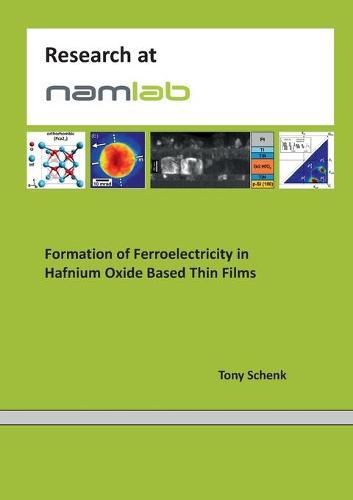Readings Newsletter
Become a Readings Member to make your shopping experience even easier.
Sign in or sign up for free!
You’re not far away from qualifying for FREE standard shipping within Australia
You’ve qualified for FREE standard shipping within Australia
The cart is loading…






This title is printed to order. This book may have been self-published. If so, we cannot guarantee the quality of the content. In the main most books will have gone through the editing process however some may not. We therefore suggest that you be aware of this before ordering this book. If in doubt check either the author or publisher’s details as we are unable to accept any returns unless they are faulty. Please contact us if you have any questions.
In 2011, Boescke et al. reported the unexpected discovery of ferroelectric properties in hafnia based thin films, which has since initiated many further studies and revitalized research on the topic of ferroelectric memories. In spite of many efforts, the unveiling of the fundamentals behind this surprising discovery has proven rather challenging. In this work, the originally claimed Pca21 phase is experimentally proven to be the root of the ferroelectric properties and the nature of this ferroelectricity is classified in the frame of existing concepts of ferroelectric materials. Parameters to stabilize this polar phase are examined from a theoretical and fabrication point of view. With these very basic questions addressed, the application relevant electric field cycling behavior is studied. The results of first-order reversal curves, impedance spectroscopy, scanning transmission electron microscopy and piezoresponse force microscopy significantly advance the understanding of structural mechanisms underlying wake-up, fatigue and the novel phenomenon of split-up/merging of transient current peaks. The impact of field cycling behavior on applications like ferroelectric memories is highlighted and routes to optimize it are derived. These findings help to pave the road for a successful commercialization of hafnia based ferroelectrics.
$9.00 standard shipping within Australia
FREE standard shipping within Australia for orders over $100.00
Express & International shipping calculated at checkout
This title is printed to order. This book may have been self-published. If so, we cannot guarantee the quality of the content. In the main most books will have gone through the editing process however some may not. We therefore suggest that you be aware of this before ordering this book. If in doubt check either the author or publisher’s details as we are unable to accept any returns unless they are faulty. Please contact us if you have any questions.
In 2011, Boescke et al. reported the unexpected discovery of ferroelectric properties in hafnia based thin films, which has since initiated many further studies and revitalized research on the topic of ferroelectric memories. In spite of many efforts, the unveiling of the fundamentals behind this surprising discovery has proven rather challenging. In this work, the originally claimed Pca21 phase is experimentally proven to be the root of the ferroelectric properties and the nature of this ferroelectricity is classified in the frame of existing concepts of ferroelectric materials. Parameters to stabilize this polar phase are examined from a theoretical and fabrication point of view. With these very basic questions addressed, the application relevant electric field cycling behavior is studied. The results of first-order reversal curves, impedance spectroscopy, scanning transmission electron microscopy and piezoresponse force microscopy significantly advance the understanding of structural mechanisms underlying wake-up, fatigue and the novel phenomenon of split-up/merging of transient current peaks. The impact of field cycling behavior on applications like ferroelectric memories is highlighted and routes to optimize it are derived. These findings help to pave the road for a successful commercialization of hafnia based ferroelectrics.